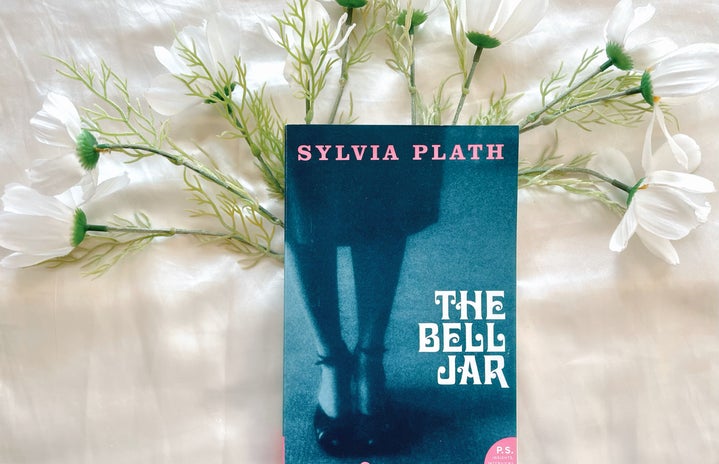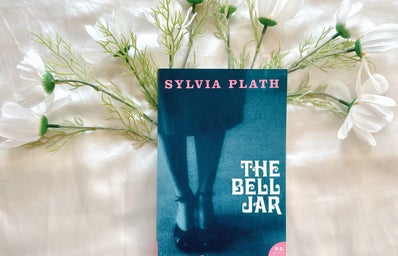When I told my friend Tilly that I had started reading The Bell Jar by Sylvia Plath, her immediate reaction was, “Seriously? I assumed you read that book a long time ago. It seems right up your alley.” Maybe I should be concerned that Tilly believed a book so psychologically disturbing was right up my alley, but I knew what she meant. I have a thing for intense reads.
The Bell Jar has been on my TBR list for years now. It’s one of those books I never got around to reading in high school, and after a while I was actually a bit nervous to read it due to my own struggles with anxiety and depression. I was hesitant to read a book known for its detailed description of mental health issues, and wasn’t sure how it would affect me.
However, I finally did it, and now I want to share my thoughts. And here, my friends, is where I warn you that there are spoilers ahead. So, do not keep reading if you’re planning to read The Bell Jar for the first time any time soon.
The Bell Jar is widely known for its depiction of the psychological deterioration of Esther Greenwood, the book’s protagonist. Esther is brilliant, beautiful, and talented–much like Plath herself. This is one of many reasons why the novel is often regarded as a Roman à clef. French for “novel with a key,” a Roman à clef is a novel about real life events that is overlaid with a façade of fiction.
Plath struggled with depression for most of her life and was treated repeatedly with electroconvulsive therapy, again, just like Esther in the novel. The similarities between Plath’s own life, and the possibility that the novel is in fact a retelling of her own experiences, are what make The Bell Jar so successfully haunting.
There were multiple instances during my reading process where I had to set the book down and take a break. As someone who struggles with mental health issues, it wasn’t easy to see depression described so accurately in the book’s pages, or to see a young woman struggle through it just as I have in the past. However, this is also what made me keep reading.
I was fascinated by Plath’s ability to describe depression so accurately in her novel, as well as her ability to give us a productive, well-functioning young woman and then guide us through her mental deterioration in such a realistic way. Underneath Esther’s depression lives a plethora of anxieties–fear of pregnancy, loss of love, lack of direction, and doubt about her own capabilities.
“I saw my life branching out before me like the green fig tree in the story. From the tip of every branch, like a fat purple fig, a wonderful future beckoned and winked…I saw myself sitting in the crotch of this fig tree, starving to death, just because I couldn’t make up my mind which of the figs I would choose…as I sat there, unable to decide, the figs began to wrinkle and go black, and, one by one, they plopped to the ground at my feet” (Plath 77).
The novel spoke to me as a woman, and more specifically as a woman in college. I believe that women are ill-prepared for what we endure in our early 20s, and that there is a collective anxiety and confusion that many girls in college deal with every day. Esther constantly struggles with her direction in life, and I think this is something many of us can relate to.
However, aside from Esther’s detailed despair, there is also surprising humor. It’s a bit odd that this novel, which tackles such dark topics, could manage to make me laugh. Esther has a unique sense of humor and her mental commentary throughout the novel was certainly amusing.
The end of Esther’s story is a happy one. She manages to pull herself out of her depression with the help of a female psychiatrist, and it is implied at the beginning of the book that she goes on to have children. Unfortunately, the end of Plath’s story is not so happy, and I think the contrast between Sylvia Plath’s and Esther Greenwood’s ends are also what make this story so ominously realistic.
So, to sum it up, I highly recommend The Bell Jar and will sing its praises to anyone who inquires about it. Though it can be a difficult read, I also think it’s an important read, especially for young women. As an avid reader, I was not accustomed to taking a break while reading, but pushing through these breaks made the ending sweeter. Despite the gloom and general anguish that I experienced alongside Esther, The Bell Jar managed to leave me with a sense of hope for where my life may go after climbing back up from my lowest points.
“I took a deep breath and listened to the old brag of my heart. I am, I am, I am” (Plath 243).


